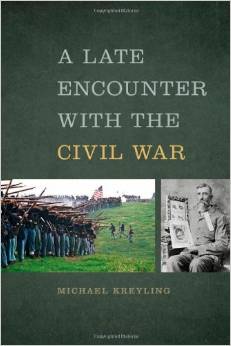“Versatile” is a word that belies this volume’s true nature, but it is the only word this reviewer has in his toolchest to describe historian Kate Masur and illustrator Liz Clarke’s new book. Freedom Was in Sight! represents a synthesis of popular art and solid historical scholarship. The narrative accomplishes the rare feat of delivering even more than the plaudits on the dustjacket promise. This is first and foremost a graphic rendering (what one might unartfully call a “comic”) of Emancipation and Reconstruction in the nation’s capital. Yet, it is also a primary source reader and textbook.
The central figure of the illustrated story is Emma V. Brown, a free Black woman born near Washington, D.C., perhaps in 1843, who attended Oberlin College beginning in 1860 and became, by 1864, one of the first teachers in Washington’s public schools. Brown serves both as the narrator of the frantic course of emancipation and Reconstruction, and as a character who navigates the opportunities and pitfalls of emancipation. Brown is also used to introduce other critical characters: Harriet Jacobs, an abolitionist born in bondage in North Carolina in 1813, who arrived in Washington in 1862, and George Hatton, a Black freedman who fought for the right to enlist in the Union armies.
Throughout, the narration centers the experiences of Black people in and around the nation’s capital, emphasizing their roles in seizing their own freedom and insisting upon greater boundaries for that freedom. They did so, of course, when emancipators were less than fully supportive allies. The volume brings grinding constitutional debates about equality and citizenship to an intimate, human level; it frankly confronts the violence and reprisals that Black Washingtonians confronted at the hands of their white neighbors. The story ends in the uncertainty of the early twentieth century, when the formerly enslaved and their descendants had secured a freedom and citizenship that reactionaries could not strip away from them, even though the very nature of equality and citizenship, as intended in the Fourteenth Amendment, were being twisted by courts and state legislatures.
Following the graphic story is an essay written by Masur, covering Reconstruction from beginning to end near Washington, D.C.. It is of a quality and incisiveness equal to anything one would find in the University of North Carolina Press’s recently published synthesis, A New History of the American South, edited by W. Fitzhugh Brundage (in which the author, Masur, also had a hand). The volume likewise contains primary sources that further enrich the illustrated story, as well as a comprehensive bibliography revealing all the underlying scholarship upon which the illustrated story was built.
In addition to being a truly creative, eye-grabbing approach to historical scholarship, Masur and Clarke’s book is a resource for students from the high school classroom to the graduate seminar. Very rarely does a book that tries to be all things to all readers manage to hit its mark, but in this case, it would be impossible to deny that Masur and Clarke have hit the bullseye. One only hopes the undoubted success of this book will encourage the University of North Carolina Press and others to continue pursuing creative and original projects like Freedom Was in Sight!
Aaron David Hyams is a Lecturer in the Department of History at Sam Houston State University.





